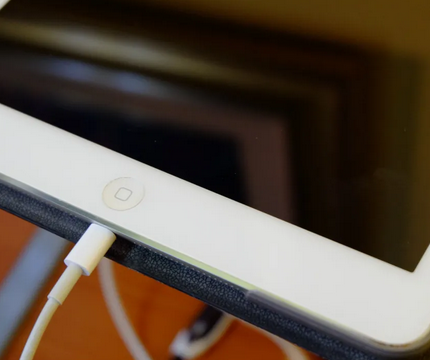Are you experiencing an iPad not charging suddenly? It doesn’t matter if your iPad suddenly stops charging. You can either try a new charger cable or restart your device. You don’t know how to fix your iPad’s charging problems.
Your iPad is not charging when you plug it in. Instead, the screen stays completely black. This article will show you how to fix your iPad’s problem with charging.
Make sure you have a charger cable
You should inspect your charging cable for signs of wear, such as bends and fraying. You can try a different cable if there isn’t obvious damage.
Make sure to check the charging block for your iPad
Your charging cable may not be working if it seems like it is. Try plugging your iPad into another power source such as a USB port or another charging block to see if it isn’t responding.
Good solutions for iPad charging issues
- Check that your iPad isn’t damaged. Overheated or too cold
- The ambient temperature range for iPads is 32oF to 95oF
- Charge with the Reverse side, Use the Lightning or USBC cable you usually use with a power adapter. Plug it into a wall outlet that you are certain is working.
- Apple claims that you might need to leave your iPhone plugged in for up to 30 minutes. However, you will normally be able to see if the device is charging within 5-10 minutes.
- If your device is still not charging, you can try another cable/power adapter (if you have one) and/or another outlet.
- Make sure to check the Lightning and USB-C Port for debris or buildup
- If you need to see inside the port, use a magnifying lens or an iPhone camera.
- If you do see lint, debris, etc. Be careful when removing it, as charging pins can become damaged. A plastic dental pick can be used to gently remove it.
- If you aren’t comfortable cleaning the charging port on your iPad, visit an Apple Store or Apple Authorized Service Provider. Or get in touch Apple Support
- Attach your iPad Air or iPad Pro to the Magic Keyboard and connect your cable to it.
- Forcing Your iPad
- iPad with no Home button. Press and release quickly, the volume button closest to the top button. Release the volume button closest to the top button by pressing and holding it down. Keep pressing the top button down until your iPad starts to turn on.
- iPad with a home button: Hold down both the top/side and the Home buttons until you see the Apple logo.
If your iPad is still not charging or responding to force restart, visit an Apple Store or Apple Authorized Service Provider or Apple Support.
Make sure your iPad is charged properly
The charging port on your iPad can accumulate dust and other debris over time. This can cause it to stop charging properly. Follow these steps to clean the charging port located at the bottom of your iPad.
Check Your iPad Charger
iPadOS can detect power fluctuations from the charger that you use. These power fluctuations can be seen as a danger to your iPad or a safety risk. Your iPad might stop charging completely, and you should not try to power it through.
You can charge your iPad with several chargers, including the USB ports on your computer and the wall charger you received with your iPad. You may have a surge protector with a USB port. If so, try it.
If your iPad charges with different chargers but not others, then it means that the problem is your iPad charger and not your iPad. No matter which charger you use for your iPad, it isn’t charging. We can help you fix the problem with your Lightning cable.
Check Your Charging Cable
Next, examine carefully the Lightning cable that you are using to charge your iPad. Do you see any discoloration or fraying on the Lightning connector? It may be time to get a new Lightning connector.
Try charging your iPad using a different lightning cable to determine if it is the problem. You can borrow a cable from a friend or browse our selection at the Payette Forward Amazon Storefront.
If your iPad charges with one type of cable and not the other, you have identified the problem with the charging cable, not your iPad.
Make sure your iPad’s charging port is clean
Now that you’ve tried many cables and different chargers, it’s time for you to look inside your iPad. Take out a flashlight, such as the one that comes with your iPhone, and carefully inspect your iPad’s charging port. We’re specifically looking for dirt, lint or other debris that might be hindering your charging cable’s connection to your iPad.
Lightning ports are older iPads. They have eight pins that connect to a lightning cable during charging. The USB-C port on newer iPads has 24 pins. It is possible for a pin to become obscured by debris and not connect with the charging cable.
It’s safer to be safe than sorry in most cases. Even if there isn’t a lot of debris around the charging port, it’s worth trying to clean it up. Sometimes, tiny particles of dust that you don’t see can prevent your iPad from charging.
Repairing Your iPad
However, not all iPads that don’t charge will be able to be fixed by a series software troubleshooting steps. Sometimes your iPad will need to be repaired.
An iPad’s charging issues are often caused by it being exposed to water or other liquids. The connectors in your iPad’s charging port can be permanently damaged, rendering it unusable.
Apple is the best place to go if you need your iPad repaired. Apple offers support online, in person, and by mail. If you are planning to visit your local Apple Store, make sure to schedule an appointment. You could waste a lot of time waiting without an appointment.
